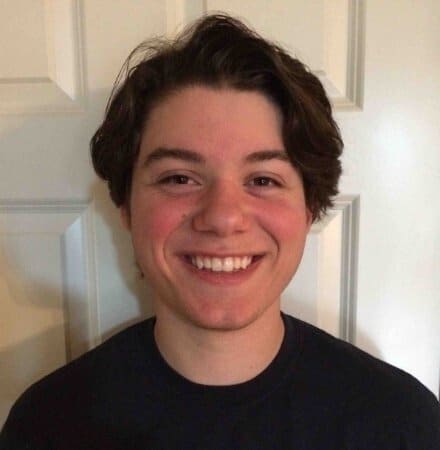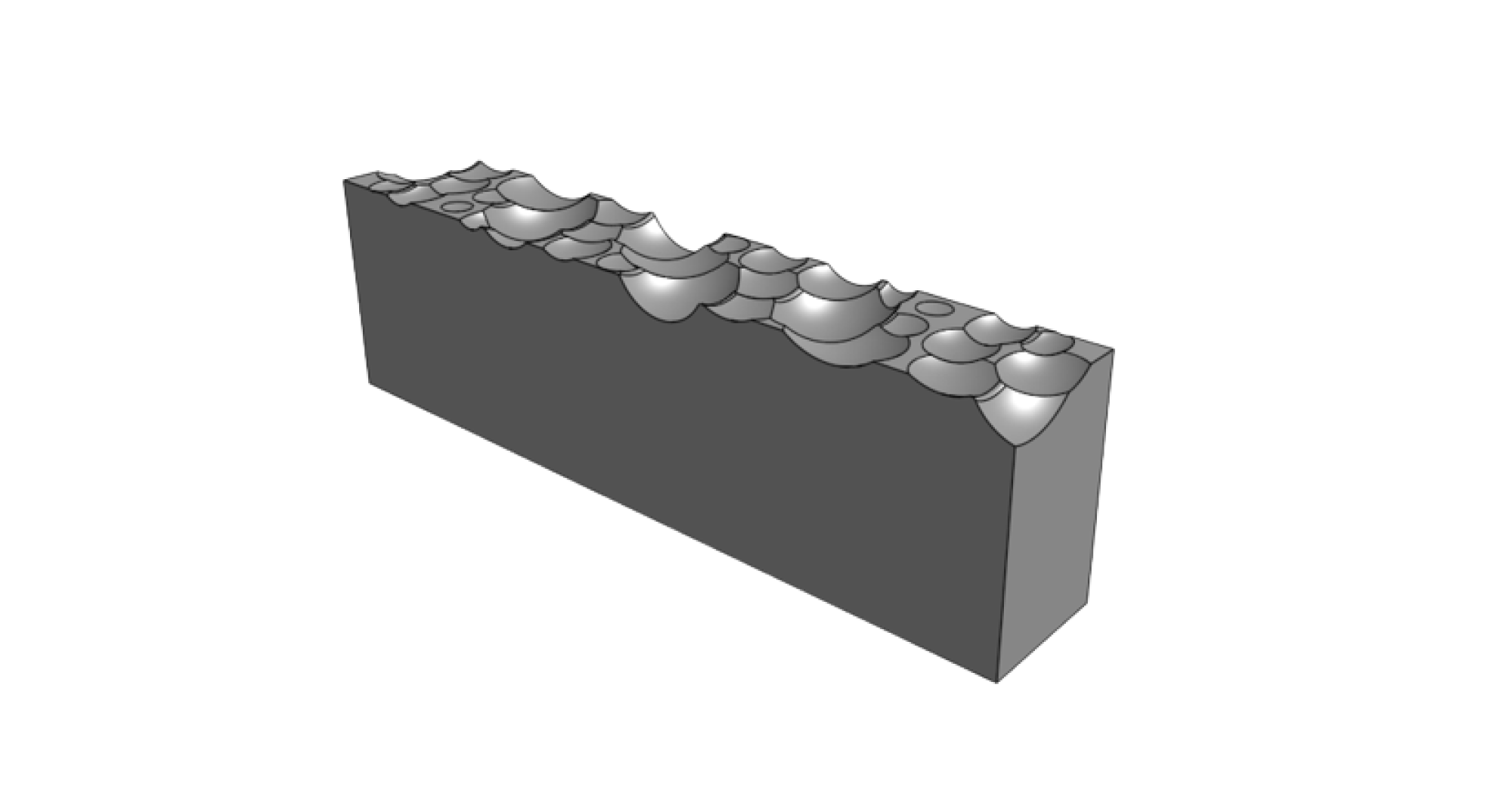Plastic molding is a precise technology that has become ubiquitous in the manufacture of almost every class of product, from dental floss carriers to automotive interiors, from NMR medical scanners to children’s toys.
One of the more refined features of the process is the ability to imprint textures, patterns and text/branding onto the surface of components with extreme precision and huge variety. These can range from simple matte finish to reduce reflectivity, through more coarse (random) textures intended to improve cosmetic scratch resilience, all the way to complex surface patterns to provide usage instructions, branding images and decorative effects.
Texturing of molded polymer components has added a whole palette of capabilities to the designers toolkit that simply make better products better looking.
The texturing of mold tool surfaces has become a complex subcontract and in-house service provision in the molding industry. The desired outcome – ranging from a simple matte finish through to elegant and attractive surface finishes that lift product quality significantly – is achieved by altering the tool surface with the details, which are then reflected in the injected material with high precision. The leading technique in this field is from Mold-Tech®.
This can apply to small areas or whole components and it can be used for ‘technical’ or aesthetic purposes – and often for a combination of the two.
Mold-Tech® textures are a pre-existing range of surface finish textures and patternings that are applied either by photo etching or laser ablation to the cavity surfaces of the tool.
Mold Tech Texture and its Impact on Mold Cavity
A mold tool is a remarkable assembly of high-accuracy machined parts that fit together with precision to form an openable, hard wearing and resilient cavity into which molten polymer can be injected; and from which the cooled and solidified part can be ejected.
The resulting mold tool is an openable chamber that is filled with polymer and then cooled, so the injected material faithfully reflects the tooled cavity. This includes the ability to mirror fine surface features down to a few µm size, making precise texturing of finished parts a simple and repeatable task.
The Mold-Tech® texturing of mold cavities is performed by three basic methods which can be used in concert to make very complex surfaces with great detail;
- Tool cavity surfaces are commonly sand/grit blasted or spherical-shot peaned, with non-textured surfaces protected by masking. This results in a selective level of coarseness in random texturing of a scale and form that is controlled by grit type, grit size and blast pressure.
- The required surfaces can also be chemically etched or laser ablated to achieve the required surface texture. Chemical etching is generally achieved by applying a photosensitive mask layer and then selectively degrading that coating with a UV exposure of an ‘image’ of the required texture, prior to selective etching. Laser etching is a one step process in which laser energy is used to vaporize tiny amounts of tool steel to create the required degree of surface complexity.
These processes allow a wide range of finishes including leather, text, images and complex patterning, and Mold-Tech® fits in this class .
- These same surfaces can be machine textures to produce features and patterning that is cut into the cavity walls by CNC processes. It is common to mix macro patterning with Mold-Tech® to create visually appealing finishes.
- Finally EDM toolmaking processes can leave an attractive matte finish to the cavity, though this may not be advisable as a molding surface as the ‘white’ surface left be EDM is not necessarily uniform or hard wearing and it can erode/corrode in unexpected ways. It is generally safer to etch away this surface and then apply a more rigorously controlled texture.
Mold-Tech® texturing offers remarkable precision and inter cavity repeatability, reducing the potential for differential finishes that can result from less systematic and precise texturing methods.
Above all, Mold-Tech® offers essentially unlimited design freedom in both functional and aesthetic texturing of tools, with faithful reproduction of the surfaces creating consistent and high quality surface finishes.
The primary benefits of mold texturing are very clear and well understood;
- Huge design freedom in aesthetic finishes with high precision.
- Scratch resilience; when a textured surface on a molding suffers abrasion, a random pre-imposed texture of similar scale to the potential scratches tends to minimize the visual impact, making product aesthetics more tolerant of wear and tear.
- Adhesion aid; a textured surface can key better to adhesives, improving glue performance.
- Stiction reduction; textured surfaces can be used to modify/reduce the coefficient of friction that the part experiences in interacting with the world.
- Aesthetics (whole surface); consistent whole-surface texturing with fine, randomized features can lift a product aesthetic and make the production less susceptible to cosmetic failure related QA issues.
- Aesthetics (complex patterns); the addition of complex and varied textures to a product or component surface can give an impression of quality/complexity and add brand recognition, text or appearance enhancement at a low cost.
Mold Tech Texture and its Impact on Mold Part
A molded polymer part is the result of liquid polymer being injected at high pressure into a cavity, where it is cooled under retained pressure to counter the thermal contraction that cooling causes. Once sufficiently cooled, the cavity will be opened and the part ejected, presenting a faithful reproduction of the shape and fine details that the cavity forms.
These parts often include additional features that relate to the feeder/injection process that introduced the polymer. Generally these features are deliberately placed at non-cosmetic points and then are trimmed to complete the part, ready for use/assembly.
In many regards, the effects of surface texture on part production are minimal, as the textures are generally very fine and have no flow or structural effect.
- Textured surfaces will generally release more easily from the tool surface as shrinkage causes highly localized peeling at features
- Deep textures on close-to line of draw surfaces can cause hanging and the texture can be smeared by ejection, so care is required in applying textures to faces that must slide.
- Reduced visibility of flow marking and weld lines can ease quality issues by making them invisible.
- Reduced need for part finishing – texturing can often obviate the need for painting in high quality parts.
- Mold-Tech® influences the surface finish, appearance and functionality of the final components. The texture applied to the mold affects the visual aesthetics, friction properties, and tactile feel of the molded parts. It can enhance or modify the surface characteristics, providing features like gloss, matte, grain, or specific patterns.

Benjamin S

Mechanical Engineer
"I wish this existed years ago!"
Jiga is the best way to get the parts you need, when you need them.
The advantages are well understood and significantly affect quality and function;
- Texture improves the visual appeal of molded parts.
- Texture can add tactile features, enhance grip, or provide specific surface properties/appearance.
- Certain textures facilitate easier part release from molds.
There are also disadvantages;
- Applying intricate textures may increase manufacturing costs. It should be noted that, while texturing incurs costs, so does polishing to remove machining marks from the tool steel.
- Highly detailed textures pose challenges in mold design and production, requiring careful management of draft angles to avoid creating quality issues.
Mold Tech Texture in Plastic Injection
Plastic injection molding is a near universal manufacturing process that serves to make low labor cost, net-shape parts that are generally ready for use immediately after molding.
Molten plastic is pressure fed into an openable mold cavity that mirrors the required part. The plastic cools/solidifies, and the mold opens to release the finished part.
Injection molding offers high precision, rapid volume production and cost-effectiveness for larger manufactured quantities.
It accommodates a huge range of thermoplastics and facilitates complex part geometries. Commonly across virtually all industries, injection molding enables the efficient and consistent production of diverse plastic products.
Tooling costs and design considerations make it only suitable for mass production, rather than limited scale manufacturing.
Texturing serves a range of purposes in the plastic injection process;
- Aiding in mold release by reducing the stiction of the molding adhering to the tool surface.
- Improved aesthetics by concealing flow lines, welding and machining marks.
- Adding functional surfaces for reduced friction or improved adhesion.
- Improving aesthetics by adding appealing surface features and by making surfaces more abrasion resilient and less scratch markable
Mold Tech Texture and Mold Surface Finis
Mold surface finish defines the texture (or smoothness) of the cavity surfaces of a plastic injection mold tool used in molding net-shape plastic parts.
It defines the texture appearance and surface characteristics of the final molded product, impacting aesthetics, some aspects of functionality and the ease of demolding.
Finishes range from as-machined to all grades of texturing and complex patterning and can also include smooth and gloss finishes in whole or part of the component surfaces.
A tool surface that has been textured with Mold-Tech® will force the molten polymer to conform to the fine features of the texturing. These features will then be faithfully reflected in the finished part, assuming molding parameters are maintained to moderate the effect of shrinkage and applied pressure is sufficient to entirely fill the cavity.
There is essentially no limit to the range of patterns, as unique design files can be imprinted onto tooling surfaces by the Mold-Tech® process.
However, a huge range of standard patterns and finishes are also offered by this method.
Mold Tech Texture and Important Points to Consider
When applying Mold-Tech texture to molds for plastic injection molding, several key considerations are essential:
- Align the texture with the component design and functionality of the completed part in-service.
- Validate that the selected texture is compatible with the chosen plastic material.
- Select part material that allows for precise texture replication and durability.
- Select an appropriate depth of texture for the desired visual and tactile effects.
- Ensure even distribution and consistency of the texture across the entire mold surface.
- Consider how the texture influences part release and ejection.
- Evaluate the cost-effectiveness of applying specific Mold-Tech® textures based on production volume and complexity.
Various factors influence the effectiveness of Mold-Tech® texture on molds for plastic parts;
- Various materials respond differently to texturing, affecting the appearance and quality of the part.
- Proper preparation of the mold surface is needed for consistent texture replication.
- The intricacy of the Mold-Tech® texture pattern impacts the final appearance and functionality of the molded part.
- The quality and construction of the mold itself can influence the ability to replicate textures accurately.
- Proper adjustment of molding parameters is essential to deliver consistent textures.
- The design and geometry of the plastic part may affect how well the Mold-Tech® texture is reproduced.
Mold tech textures enhance product aesthetics but pose challenges.
- Inconsistent texture application can result in defects, impacting visual appeal. To address this, maintain precise mold temperature and pressure.
- Texture wear leads to diminished quality over time. Employing high-quality mold materials and regular maintenance mitigates this issue.
- Achieving uniform texture distribution on complex geometries can be challenging. Implementing advanced molding technologies, such as multi-axis CNC machining improves consistency and accurate texture replication.
- Angle of the textured surface relative to line of draw can result in texture variability. Don’t rely on texturing surfaces that have insufficient draft for the depth/form of the texture to be released.

George B

CTO
"Hands-Down the Best Platform and Partner for Fast, Quality Parts"
Jiga is the best way to get the parts you need, when you need them.
Mold Tech Texture and Process Requirements
Implementing Mold-Tech® texture demands a systematic process, to ensure quality and consistency.
- Choose the appropriate mold material, considering texture intricacy and durability.
- Accurate texture application depends upon meticulous mold surface preparation, particularly polishing and grain application.
- Employ advanced CNC machining techniques to replicate intricate textures that are machined-in.
- Maintain precise control of mold temperature and injection pressure during the molding process, to deliver consistent results.
- Regularly inspect molds for wear and maintain with care, to ensure long-lasting quality.
- Collaborate closely with texture service-providers to select textures compatible with the parts, tool and mod material and validate compatibility with molding processes.
- Conduct thorough quality checks throughout production to identify and rectify any deviations.
Imprinting the required Mold-Tech® texture on tool surfaces requires well defined equipment and tools.
- Precision CNC milling machines, equipped with multi-axis capabilities, are essential for precise and crisp texture replication.
- High-quality polishing tools, abrasives and polishing compounds are necessary for preparing mold surfaces.
- Inspection tools like magnifiers or microscopes help assess texture quality in both tooling and resulting parts.
- Maintenance equipment includes cleaning brushes and rust inhibitors to remove molding detritus and prolong tool life.
Results in texture of parts from Mold-Tech® surfaced tools depend heavily on following best-practice in molding.
- Maintain precise control over mold temperature and pressure during the molding process for consistency, guided by Mold-Tech® technical advice and in-house experience.
- Worky with texture suppliers to validate compatibility with molding processes.
- Conduct regular and appropriate quality checks before and during production to identify and address deviations.
- Regularly inspect tools to identify issues and maintain molds with care to prevent degraded results.
Mold Tech Texture and Draft Angle
Draft angle can have marked effect on the limitations in texturing;
- Deeper and sharper featured textures can create hang-up issues in ejection, as some texture features may slide less easily over the textured tool surface, needing higher draft to release.
- Complex features lying perpendicular to the line of draw on drafted surfaces will require that either draft angles are increased or the features are softened and blurred to allow them to eject without damage.
Where the draft angle and the texture are less compatible, high features in the texture will tend to be rubbed/smeared by the high features in the tool surface texturing. This can result in severe cosmetic damage on drafted surfaces that renders the product of very poor visual quality.
Polished and flat surfaces can have low draft angles. This depends on the degree of polish, up to and including parallel surfaces (0° draft angle) can release from limited areas.
Shallow features of a few µm depth and rounded form can generally eject cleanly at 3° of draft. Typical examples of this type of surface finish are surfaces that equate to fine bead blasting or patterns such as leather texture.
Where sharper or deeper texture features are required, such as in surfaces equivalent to more coarse bead blasting or text marking etc, larger draft angles are necessary.
As a rule, it is wise to avoid the use of complex or deep textures on drafted surfaces. This can often be achieved by dynamic adjustment of texture as surfaces transition towards line of draw, softening the texture, or reducing its depth or both.
In particular, surfaces that curve towards line of draw only approach draft angle limitations on texturing at the end of the curvature, so this reduction in texturing is not marked and can be barely perceptible
Conclusion
Mold texture serves a range of functional and aesthetic needs that benefit product quality in fundamental ways;
- Textures improve the aesthetic appeal of product surfaces.
- They reduce scratch sensitivity of parts, minimizing the marring of surfaces.
- They impart branding and functional information through grip areas, text/image instructions and the quality-lift that results from non-functional but decorative marking.
- They can be used to reduce friction and stiction of parts.
- They can reduce finger-printing as an appearance- contamination.
Mold-Tech® texture is liable to witness several trends and advancements:
- Digital Texture design; Advanced software and digital are enabling precise and intricate texture design, allowing for greater customization and design flexibility.
- 3D printing; Integration of metal 3D printing into the mold making process is liable to enhance the replication of complex textures with high accuracy, without extensive post-process needs.
- Smart textures; Incorporation of smart materials that can change texture properties dynamically, adapting to different product requirements or environmental conditions. This could eventually see variable surface textures being a user setting on products.
- Machine learning (ML) and AI; AI algorithms may be employed to optimize texture design based on product specifications, product geometries and consumer preferences, leading to more efficient and effective texture applications.
- Nanotechnology; The use of nanomaterials in Mold-Tech® will offer enhanced durability, scratch resistance (and self healing) and improved texture replication at a microscopic level.
- Environmentally focussed textures; A focus on sustainable practices may drive the development of eco-friendly texture materials and processes such as self healing and self cleaning surfaces.
- Real-time monitoring; Monitoring systems operating during molding already increasingly provide real-time quality control.

Yoav A

